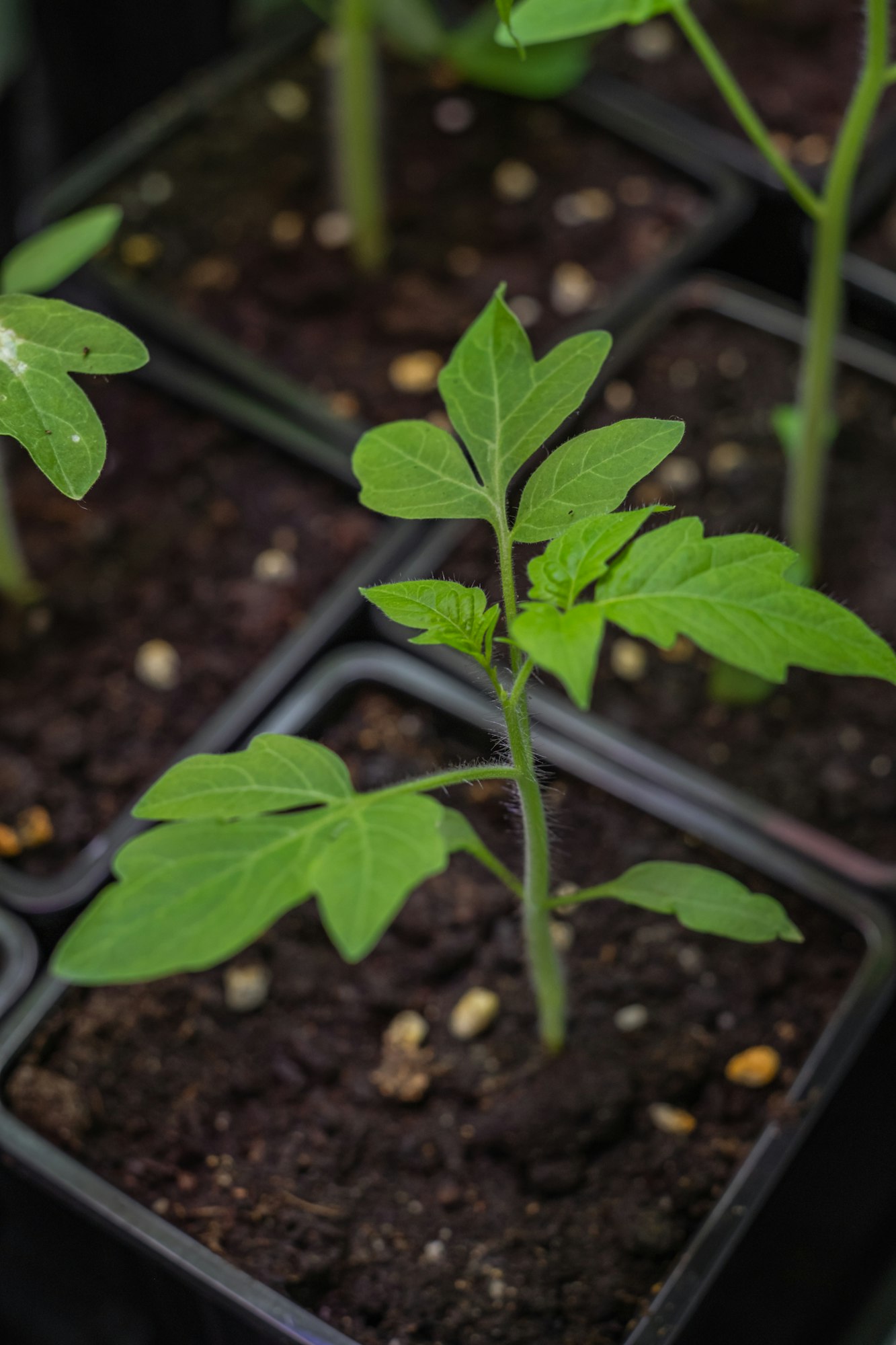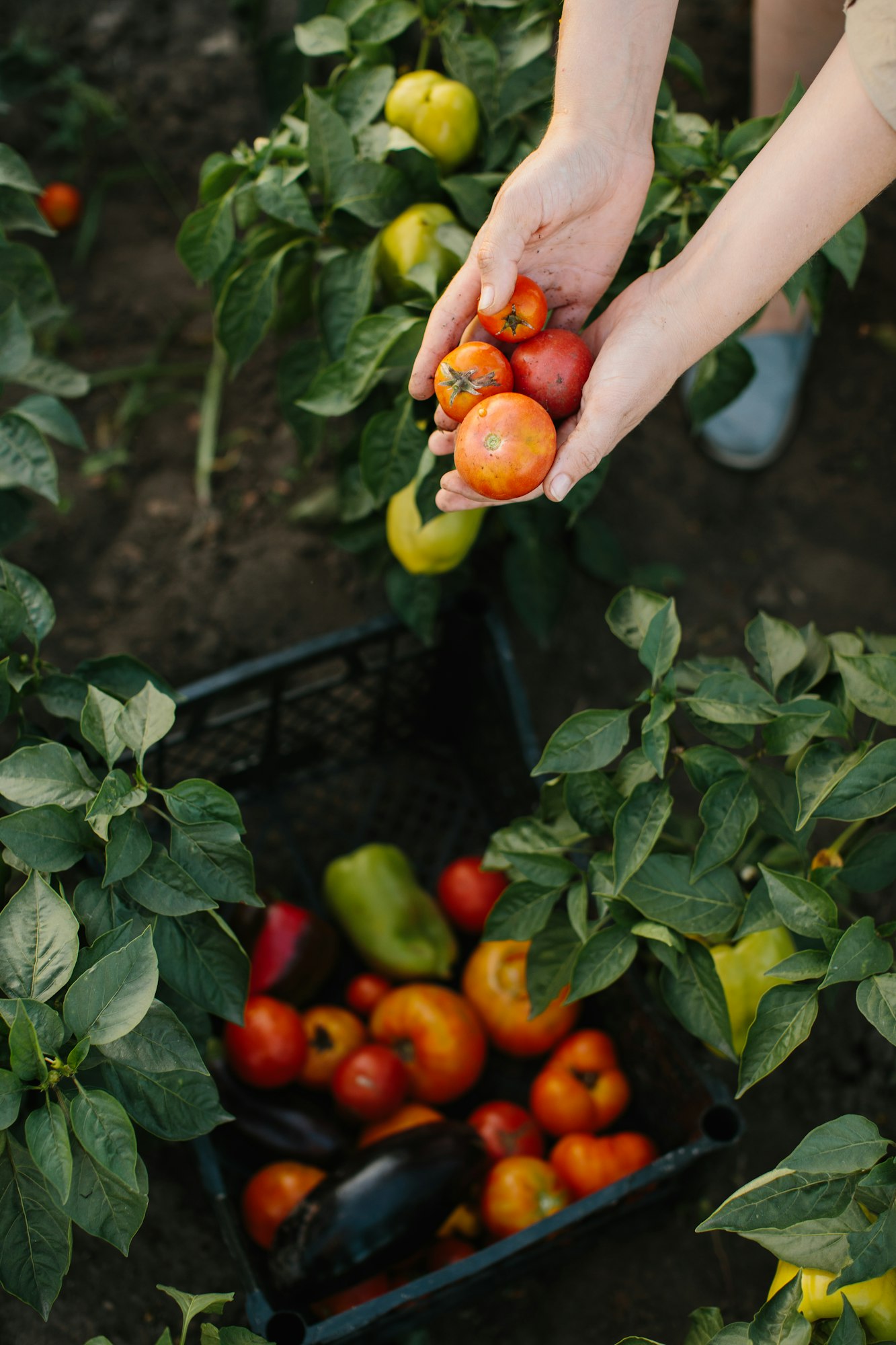In This Article Show
As an experienced gardener with over 13 years under my belt, I’ve had the pleasure of nurturing countless tomato plants in my garden. Through trial and error, I’ve learned the ins and outs of what it takes to grow healthy, vibrant tomatoes, and I’m here to share those insights with you.
Understanding the growth stages of tomatoes is crucial for any gardener, whether you’re just starting or have been gardening for years. Each stage of a tomato plant’s life cycle comes with its own set of needs and challenges, from the initial germination of seeds to the joy of harvesting plump, ripe tomatoes.
In this post, we’ll cover everything you need to know about tomato growth stages and timelines. We’ll discuss the factors that affect tomato growth, such as climate, soil type, and watering practices, and provide practical advice on how to care for your plants at each stage. By the end, you’ll be equipped with the knowledge to grow your delicious tomatoes successfully.
Tomato Growth Stages & Timelines
1. Seed Germination

Tomato seeds typically germinate within 5 to 10 days under optimal conditions. However, this timeframe can vary based on the temperature and humidity of the environment. The key to successful germination is maintaining a consistent temperature between 70-80°F (21-27°C) and providing moderate humidity. Seeds require a moist (not waterlogged) environment to sprout effectively.
Tips for improving germination rates
- Use fresh seeds: Fresh seeds have higher germination rates. Check the expiration date or conduct a germination test if you’re unsure about their viability.
- Pre-soak seeds: Soaking seeds in warm water for 12-24 hours before planting can help speed up germination.
- Maintain optimal soil temperature: Use a heat mat under seed trays to keep the soil within the ideal temperature range.
- Cover seed trays: Covering seed trays with a plastic dome or wrap can help retain moisture and warmth, essential for germination.
2. Seedling

After germination, tomato plants enter the seedling stage, characterized by the development of their first true leaves beyond the initial seed leaves (cotyledons). This stage is crucial for building a strong foundation for future growth.
Get Gardening For Beginners
Our new EBOOK shows newcomers and green thumbs alike a step by step guide to growing the garden of their dreams.
How to care for tomato seedlings
- Provide sufficient light: Tomato seedlings require 14-16 hours of direct light each day. Use grow lights if natural sunlight is insufficient.
- Water carefully: Keep the soil consistently moist but avoid overwatering, as it can lead to fungal diseases.
- Temperature control: Maintain a daytime temperature of 65-70°F (18-21°C) and a slightly cooler temperature at night.
- When to transplant seedlings outdoors: Transplant seedlings outdoors after the last frost when they have at least two sets of true leaves and night temperatures consistently stay above 50°F (10°C).
3. Vegetative Growth

This stage focuses on the development of stems and leaves. The plant builds its framework and increases in size, preparing for flowering and fruiting.
The importance of nutrients and water during this stage
- Nutrients: A balanced fertilizer, rich in nitrogen and potassium, supports healthy leaf and stem growth.
- Water: Consistent, deep watering encourages strong root development. Avoid wetting the leaves to reduce disease risk.
Identifying and preventing common issues
- Leggy plants: Ensure adequate light to prevent seedlings from becoming elongated and weak.
- Nutrient deficiencies: Yellowing leaves can indicate a lack of essential nutrients. Adjust your fertilization routine accordingly.
4. Flowering and Fruit Set

Tomato plants typically begin to flower about 6 to 8 weeks after transplanting, depending on the variety and growing conditions. Flowers must be pollinated to produce fruit. While tomatoes are self-pollinating, encouraging pollinator activity or gently shaking the flowering branches can improve the fruit set.
How to encourage healthy fruit set
- Optimal temperatures: Ensure daytime temperatures are between 70-85°F (21-29°C) for best pollination.
- Adequate watering: Consistent moisture is crucial during flowering and fruit set. Avoid fluctuations that can lead to blossom drop or poor fruit development.
5. Fruit Development

Sunlight, water, and nutrients are pivotal. The plant requires full sun, regular deep watering, and a shift towards a phosphorus-rich fertilizer to support fruit development. Regularly inspect plants for signs of pests and diseases. Use organic or chemical controls as needed, following safe application practices.
Get Gardening For Beginners
Our new EBOOK shows newcomers and green thumbs alike a step by step guide to growing the garden of their dreams.
6. Harvesting

How to determine when tomatoes are ready for harvest: Tomatoes are ready when they are firm and have reached their full color. Taste is the ultimate test for ripeness.
Harvesting techniques
- Gentle handling: Pick tomatoes gently to avoid bruising. Use scissors or pruners to cut the fruit from the plant if necessary.
- Regular harvesting: Regularly picking ripe tomatoes encourages the plant to produce more fruit.
Post-harvest handling and storage tips
- Avoid refrigeration: Store tomatoes at room temperature for the best flavor. Refrigeration can make them meaty and flavorless.
- Use ripe tomatoes promptly: To maximize flavor and nutritional value, use harvested tomatoes within a few days.
By understanding and catering to the needs of tomato plants at each stage of growth, gardeners can enjoy a bountiful and delicious harvest.










